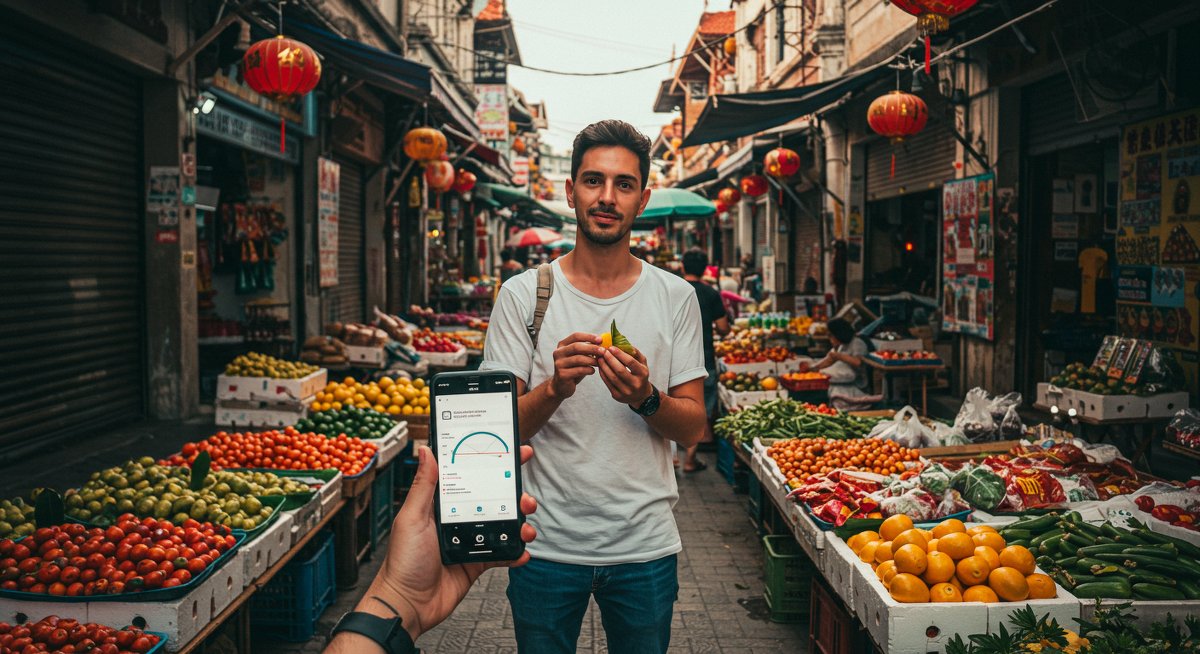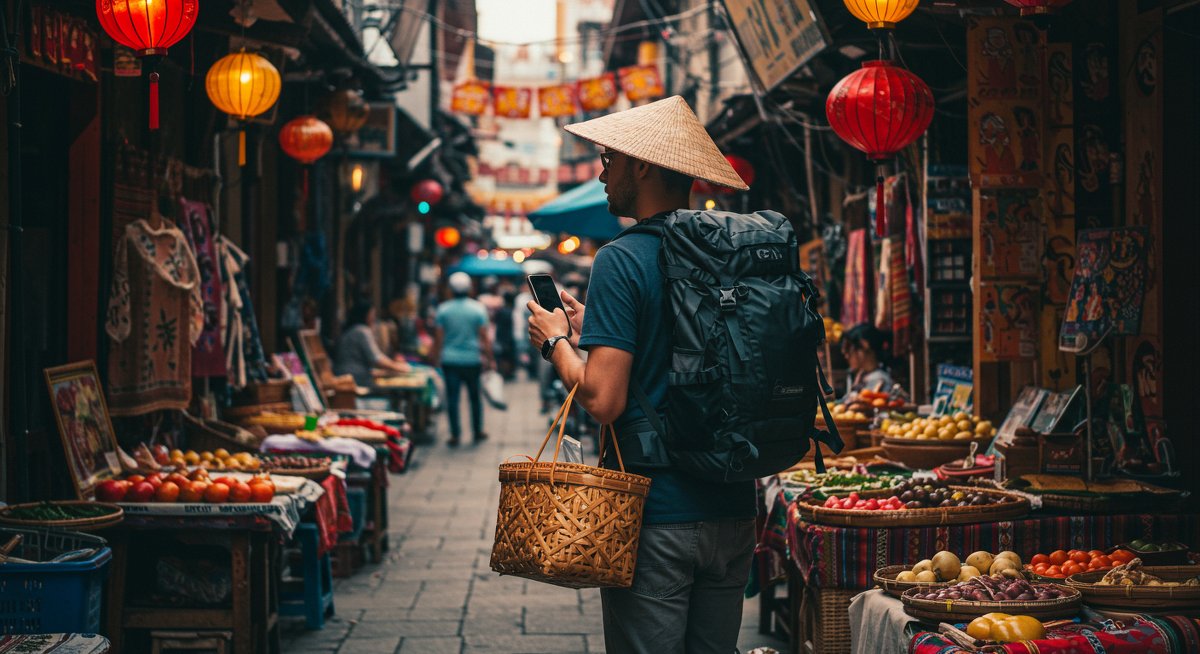
Southeast Asia: a region of vibrant cultures, stunning landscapes, and, thankfully, incredibly affordable travel. If you're dreaming of exploring this corner of the world but worried about the cost, you've come to the right place. This guide is specifically designed for you, the beginner traveler eager to experience Southeast Asia without breaking the bank. We'll cover everything from where to go and what to see, to practical money-saving tips and essential travel hacks to make your 2025 adventure unforgettable. This is your launchpad for an amazing journey.
Why this matters for new travelers
International travel can seem daunting, but Southeast Asia is one of the easiest and most rewarding regions for first-timers. The cost of living is low, making it possible to stretch your budget further. The infrastructure is well-developed for tourism, with readily available transportation, accommodation options for all budgets, and a welcoming atmosphere for visitors. Also, the region's incredible diversity – from the bustling streets of Bangkok to the serene beaches of Bali – means there's something for everyone. For beginner travelers, Southeast Asia offers a perfect blend of adventure, culture, and relaxation, all while being kind to your wallet.
Getting started: What you need to know
Before you even pack your bags, a little planning goes a long way. First, research visa requirements. These vary based on your nationality and the countries you plan to visit. Websites like [your country's foreign travel advisory site] are invaluable resources. Then, consider the best time to travel. The dry season (November to April) is generally ideal, but shoulder seasons (April-May and September-October) offer fewer crowds and potentially lower prices. Next, vaccinations: Consult your doctor or a travel clinic well in advance to get the necessary vaccinations and health advice. Finally, budgeting: determine a realistic daily budget, factoring in accommodation, food, transportation, activities, and a little extra for unexpected expenses. Trust me, a little extra padding can save your trip.
Step-by-step solution
- Choose Your Destinations: Start with a few countries. Thailand, Vietnam, Cambodia, and Indonesia (Bali) are popular choices for beginners. Research each country's main attractions, visa requirements, and average costs.
- Example: Thailand offers bustling cities like Bangkok and Chiang Mai, stunning beaches in the south, and incredible street food. Vietnam boasts diverse landscapes, from the rice terraces of Sapa to the beaches of Phu Quoc, plus rich history and culture. Cambodia features ancient temples like Angkor Wat and the beaches of the islands in the South. Indonesia (Bali) is known for its beautiful beaches, yoga retreats, and vibrant nightlife.
- Book Flights and Accommodation (Strategically): Use flight comparison websites like Aviasales to find the best deals. Book accommodation in advance for your first few nights, but consider flexibility as you go. Hostels and guesthouses are great budget options.
- Example: Consider booking flights and accommodation a few months in advance, especially if travelling during peak season. However, leave some flexibility in your itinerary to take advantage of last-minute deals or spontaneous adventures.
- Pack Light: Pack only the essentials. Consider a backpack instead of a suitcase for easier movement. Bring versatile clothing that can be layered.
- Example: A versatile wardrobe includes quick-drying clothes, a lightweight rain jacket, comfortable walking shoes, and a universal adapter.
- Money Matters: Notify your bank about your travel plans to avoid issues with your cards. Get local currency upon arrival or use ATMs, but be aware of fees. Use a travel credit card for purchases and cashback.
- Example: Withdrawing larger amounts of local currency less frequently can save on ATM fees. Consider using a travel credit card, like the Capital One Venture X or similar travel rewards card, for purchases to earn rewards and avoid foreign transaction fees.
- Transportation within Southeast Asia: Use local transport like buses, trains, and ferries for budget-friendly travel. Consider overnight buses for longer distances, which saves on accommodation costs.
- Example: Local buses and trains are significantly cheaper than private taxis or tourist buses. Overnight buses save you a night's accommodation. Always research the best and most cost-effective routes for the distances you want to travel.
- Stay Safe: Be aware of your surroundings, protect your belongings, and research scams in the areas you visit. Have travel insurance.
- Example: Always keep your passport, credit cards, and other valuables secure. Be careful with your drinks and food, especially when travelling in crowded areas. Be informed about local scams.
Your first $1000: What to expect
For many budget travelers, $1000 is a realistic starting point for a month-long trip to Southeast Asia. But how far will it take you? Let's break it down:
- Accommodation ($300): Expect to spend around $10-15 per night in hostels or guesthouses. This can vary depending on the country and location. You can save money by booking in advance or opting for shared rooms.
- Example: In Thailand, a dorm bed in Bangkok might cost $8-12 a night, while a private room in a guesthouse in Chiang Mai could be $15-25.
- Food ($300): Street food is your best friend! Meals can cost as little as $2-5 per meal. Eating at local restaurants instead of tourist-oriented ones can significantly cut down on food costs.
- Example: A delicious Pad Thai in Thailand might cost $2, while a similar meal in a tourist-heavy area could be $8.
- Transportation ($200): This includes local transport, buses, and some internal flights. Travelling slowly will help you save.
- Example: A bus ride from Bangkok to Chiang Mai might cost $15-20, while a short flight could cost $40-60.
- Activities and Entertainment ($200): This is where your budget gets allocated to temples, tours, and activities. Remember to factor in entrance fees and tour costs.
- Example: A day trip to the temples of Angkor in Cambodia might cost $30-40, but there are many free activities like hiking, exploring local markets, or relaxing on the beach.
This budget allows you to experience a lot, but remember to be flexible and adjust your spending based on your priorities.
Common beginner mistakes to avoid
- Overpacking: Bring only essentials to avoid excess baggage fees and make it easier to move around.
- Over-scheduling: Leave room for spontaneity. Allow yourself to linger in places you love.
- Ignoring local customs: Respect local traditions and dress modestly when visiting temples.
- Eating only at tourist restaurants: Embrace street food for delicious and cheap eats.
- Not researching visa requirements: Ensure you have the right documentation before your trip. Always check with official government websites.

International travel considerations
Southeast Asia is a diverse region, and each country has its own unique culture. It's essential to research and respect local customs. Learn a few basic phrases in the local language, as this will enhance your experience. Be mindful of local laws and regulations. Also, remember that Southeast Asia is in a different time zone, so plan your travel accordingly. And, of course, always be aware of potential health risks and take necessary precautions, such as vaccinations and insect repellent.
Building your travel knowledge
Read travel blogs, watch travel vlogs, and join online travel communities for inspiration and practical advice. There are plenty of resources to help you learn about Southeast Asia's best-kept secrets, off-the-beaten-path destinations, and authentic cultural experiences. You can also start a travel journal to record your experiences, reflect on your journey, and plan for your next adventure. Building your travel knowledge is an ongoing process, and the more you learn, the more rewarding your travels will be.
Next steps in your travel journey
Congratulations, you're now equipped with the basics for an incredible budget-friendly adventure in Southeast Asia! Now it's time to start planning your itinerary, booking your flights and accommodation, and preparing for the journey. Remember to be flexible, embrace the unexpected, and enjoy every moment. If you are looking for help with your flights and hotels, I recommend Aviasales and Booking.com as a start. Safe travels!